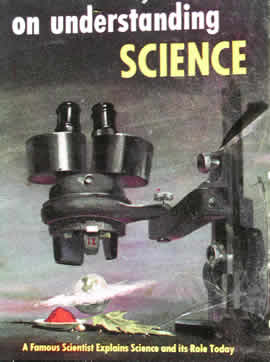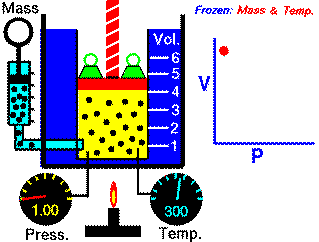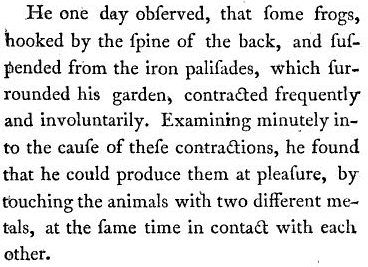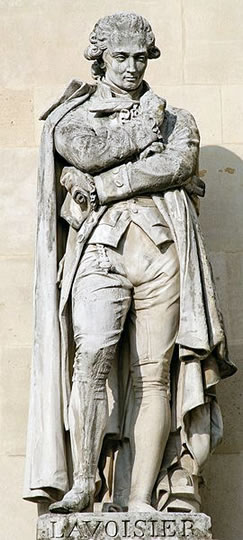On Understanding Science, an historical approach
Author: M. Crasnier-Mednansky, Ph.D., D.Sc.Copyright © 2005 Mednansky Institute, Inc.
In 1946, the authorities of Yale University invited James B. Conant, the twenty third president of Harvard University, to deliver the Terry Lectures (established in 1905 by a gift from Dwight Harrington Terry of Bridgeport, Connecticut). The subsequent outcome was a book entitled On Understanding Science published as a Mentor Book in 1951.

Cover of the 1951 Mentor Book published by The New American Library
On understanding Science reveals the thoughts of an eminent scientist who placed education in the forefront of his obligations toward mankind. By questioning how to teach science to the layman, J. Conant suggested a course in the 'Tactics and Strategy of Science' through the study of 'case history'. By doing so, he intended to bridge the gap between the scientist and the layman who is taught, not the methods and facts by which science has been advanced, but the resulting knowledge of scientific advancement. In other words, his purpose was to educate for a greater degree of understanding in science by an historical approach. Will then the layman in position of authority be contributing better to the welfare of society? As mentioned in the preface of the 1947 first edition of the book, J. Conant was, at the time, apprehensive that an agreement for international control of atomic energy would not be reached. By reforming the scientific education of the layman, he was inclined to hope that social progress will occur upon understanding the tactics and strategy of science.
To illustrate the principles of 'Tactics and Strategy of Science', three case histories were analyzed by J. Conant. The first one is related to Robert Boyle and his studies of the air pump which led to the quantitative relation between gas pressure and volume (Boyle's law pV=K).
NASA animated illustration of Robert Boyle's law
The pressures and expansions [are] in reciprocal proportion… - Robert Boyle, 1662
With this seventeenth century case history, one can demonstrate that new concepts evolve from experiments and emphasize that advance in experimentation, especially through new techniques, is linked to development of new concepts. Difficulties in settling a question by experiment can be apprehended and the significance of the controlled experimentation explained. Also, controversies are beneficial as they stimulate further experimentation. Understanding that a theory is overthrown by a better theory and not merely by contradictory facts can be achieved. Finally, the connection between science and the social, religious and political setting of the time is clearly illustrated by this case history.
The second case history from the eighteenth century focuses on the electric battery through Luigi Galvani's discoveries and Alessandro Volta's invention. In 1790, Galvani proved that the nerve of a dead frog in contact with metals elicits muscular contraction. It sets the example of an accidental discovery brought to the attention of a 'prepared mind'.

From Experiments and observations relative to the influence lately discovered by M. Galvani and commonly called animal electricityGoogleBook by Richard Fowler, 1793
Most importantly this case history demonstrates, in order to plan beautiful experiments, a 'working hypothesis' is not necessary when dealing with a new phenomenon, and also indicates a new concept results from such experiments. Moreover discovery of a new technique, or a new concept, precedes major scientific advances. The invention of the electric battery by Volta was indeed revolutionary and brought many more discoveries at the beginning of the nineteenth century.

From Abstracts of the papers printed in the Philosophical Transactions of the Royal Society of LondonGoogleBook by Mr. Alexander Volta, Volume 1, 1800 to 1814
Two more principles can be drawn from the third case history concerning Antoine Laurent Lavoisier's work and the phenomenon of combustion. First, it is difficult to overthrow a well-established theory, even though the theory in question (the phlogistic theory) was at the time 'twisted' to reconcile results of brilliant experiments. In retrospection, it seemed that "minds were paralyzed", as worded by J. Conant. Experimentation however was difficult as chemists of the eighteenth century were not ready to handle and characterize gases. Second, to be fruitful discoveries must fit the time. It took 150 years to accept the facts of calcination (the conversion of metals into oxides, a.k.a. oxidation), especially the increase in weight of a metal on calcination.

Lavoisier by Jacques-Léonard Maillet, stone sculpture ca. 1853, Cour Napoléon, Louvre museum, Paris
© 2008 Marie-Lan Nguyen / Wikimedia Commons
As a final statement, one can say that principles of these past case histories are today applicable to some of the advances of the last fifty years, surely in the field of biology. One should be cautious however not to consider the indispensable amassment of data as an advancement of science, and impress on the student's mind the unfortunate but inevitable, political and social influence imposed on the scientist and his work.

From The life of PasteurGoogleBook by R. Vallery-Radot, translated by R. L. Devonshire, 1906
Elaboration: The French version for Pasteur's quote does not refer to 'great intellectual men' but to 'great works of the thought' (les grands travaux de la pensée). However, the forgetfulness and disdain that France had had was in relation to Lavoisier and its tragic death at the guillotine. It was a sad observation for Pasteur as it went from there differently at the end of the eighteenth and beginning of the nineteenth century, particularly with the reign of Napoléon Bonaparte. As stated in The life of Pasteur, Bonaparte "made of science what he would have made of everything - a means of reigning", and thus showed much respect for science.
Miscellanea:
Modern Science and Modern Man (1952 Bampton Lectures in America) by James B. Conant, 1952
On the electricity excited by the mere contact of conducting substances of different kinds, a letter from Alessandro Volta sent to the president of the Royal Society of London in 1800, Phil. Trans. R. Soc. 1800 90, 403-431 (in French). The letter was published in Allessandro Volta and the electric battery by Bern Dibner, a publication from the Burndy Library.
Elements of Chemistry, in a new systematic order, containing all the modern discoveriesGoogleBook by Antoine Laurent Lavoisier, translated from French by Robert Kerr, 1789, E-text No 30775 at Project Gutenberg
Symphony No 3 'Eroica' by Ludwig van Beethoven, New York Philharmonic conducted by Willem Mengelberg (1930, remastered 2015)
Minst.org Online Library Index